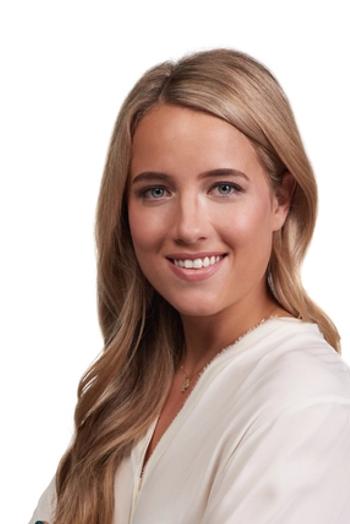
Shifting Careers: The sky (or sometimes the airline route) is the limit
Misperceptions and realities about the traveling physician’s role.
I’ve always loved traveling. When I first took my OB/GYN job in Maine, I told my clinical partner not to take my position out of the classified ads because it wasn’t going to be a lifetime gig for me. Somehow, ten years flew by; it was suddenly 2019 and I was immersed in the day-to-day medical practiceseeing patients, charting clinical data, performing deliveries. Yet, the travel bug was still there, strong as always.
When an old friend brought up an interesting opportunity to work in labor and delivery rooms across the country, I took it as an inviting sign to make a change. As part of the
While COVID-19 halted some of the airline routes available at the local airports and made getting to destinations a bit trickier than before, it did little to deter the need for physicians that could fill critical roles in hospitals. For those in a career rut or who may have put their own desires to pursue a travel position on hold, here are some of the common misperceptions and realities about the travel physician role:
Misperception 1: Traveling positions are for young physicians who aren’t tied down with family.
Coming in as a physician with twelve years of work experience and a former department head put me at a significant advantage to establish myself credibly as a partner within the hospitals where I was placed. For my particular role, clinical experience was required, as I would be fulfilling an outstanding leadership need.
Additionally, the role was attractive to me because I had a family and the arrangement gave me more time and flexibility—not less—to spend with them. One of the main advantages of moving into the hospitalist role was that I was not taking administrative work home with me like I often did when I was leading a department. Hospitalists work hard in a clinical setting and when we’re off, we’re able to focus on our life outside of that. For me, that includes hobbies like gardening, disc golf, and parenting a sixteen-year-old who now knows how to drive!
Misperception 2: Travel physicians are not in locations long enough to make a difference.
Though I didn’t realize it until I was in the OB Diplomat Program, moving between health systems helped with being able to identify and share best practices. During the early stages of the pandemic when hospitals were still waiting for further guidance from the federal level, I was able to work with hospital leaders from multiple systems to gather the most up to date information and establish early protocols for protecting patients and providers.
Moving between health systems also provided an opportunity to implement processes that have proved effective in similar settings. For example, I worked with a less resource-rich program to establish simulation training. This helped staff to practice scenarios so that we would be prepared in the event of an emergency situation. Our team ran through a simulation for postpartum hemorrhage, and right after we had conducted the drill that day, the real thing happened. The process went almost exactly as we had practiced, and we were able to help the patient as a result. Had I not seen the potential of simulation training to transform patient care in previous settings, the outcome may have been quite different.
Misperception 3: Travel physicians challenge the autonomy of private practice providers.
Especially when we launch a new hospitalist program, there is sometimes a misguided fear that the hospitalists are there to take the job of the community physicians or take their patients. However, the community physicians and staff usually see the benefit of adding hospitalists to the team within the first couple weeks. It also transforms the ability of the care team to triage effectively by having a physician on-hand 24/7. As an OB hospitalist, my role is to support the private practice physicians. Since I can spend more time with the patients on face-to-face interactions, and to take on unassigned patients, the whole team benefits.
Misperception 4: Travel physicians don’t have the same support system in place as full-time physicians.
Unlike a locum position, my current arrangement provides benefits and continuing education opportunities more akin to traditional full-time employment. In most locum positions, there aren’t a lot of options that offer benefits such as medical malpractice insurance, or a clear organizational mission. As part of a hospitalist program, however, not only are we connected with clinicians across the nation, but we also interact with other physicians in the travel program on an ongoing basis to create a virtual support network. These forums give us a space to discuss trends in cases and best practices for our specialty, and share tips on hotel stays, airline specials, and other matters that come with being a travel doctor.
Misperception 5: Travel physicians are at a disadvantage when it comes to connecting with patients.
One of the greatest parts of being a travel physician is that my shifts are scheduled for a set amount of time. Because of this, I can spend more time at the patient bedside. My patient mix is usually a combination of both assigned and unassigned patients. Among the more rewarding parts of my job is the ability to make connections with patients that previously have had little to no engagement with the healthcare system, including those that have gotten used to having low expectations when it comes to medical care. When they realize they now have access to a physician that is able to spend time with them at a critical moment, who isn’t rushing to move on to the next case and is willing to listen to their concerns in a non-judgmental way, it can be a life changing moment for that patient.
Travel positions can be a truly rewarding pathway for physicians wanting to get back to focusing on clinical work or practicing in a variety of settings. For experienced practitioners that are looking for a new way to make a difference, apply their leadership skills, and rack up serious airline points, the sky is no longer the limit — it’s the highway to new opportunities in clinical care.
About the Author
Garrick Slate, MD is part of the Diplomat Program at Ob Hospitalist Group, which connects OB physicians with hospitals across the nation.
Newsletter
Optimize your practice with the Physicians Practice newsletter, offering management pearls, leadership tips, and business strategies tailored for practice administrators and physicians of any specialty.













